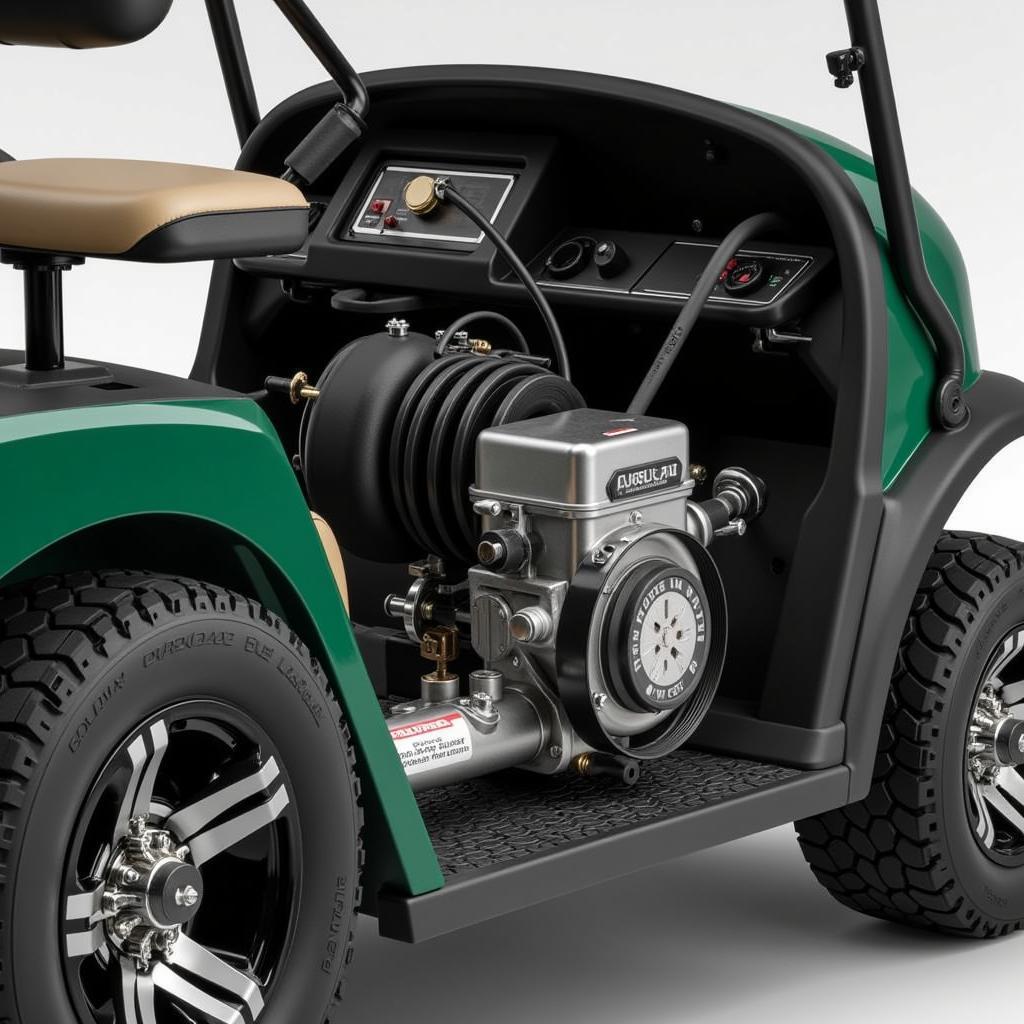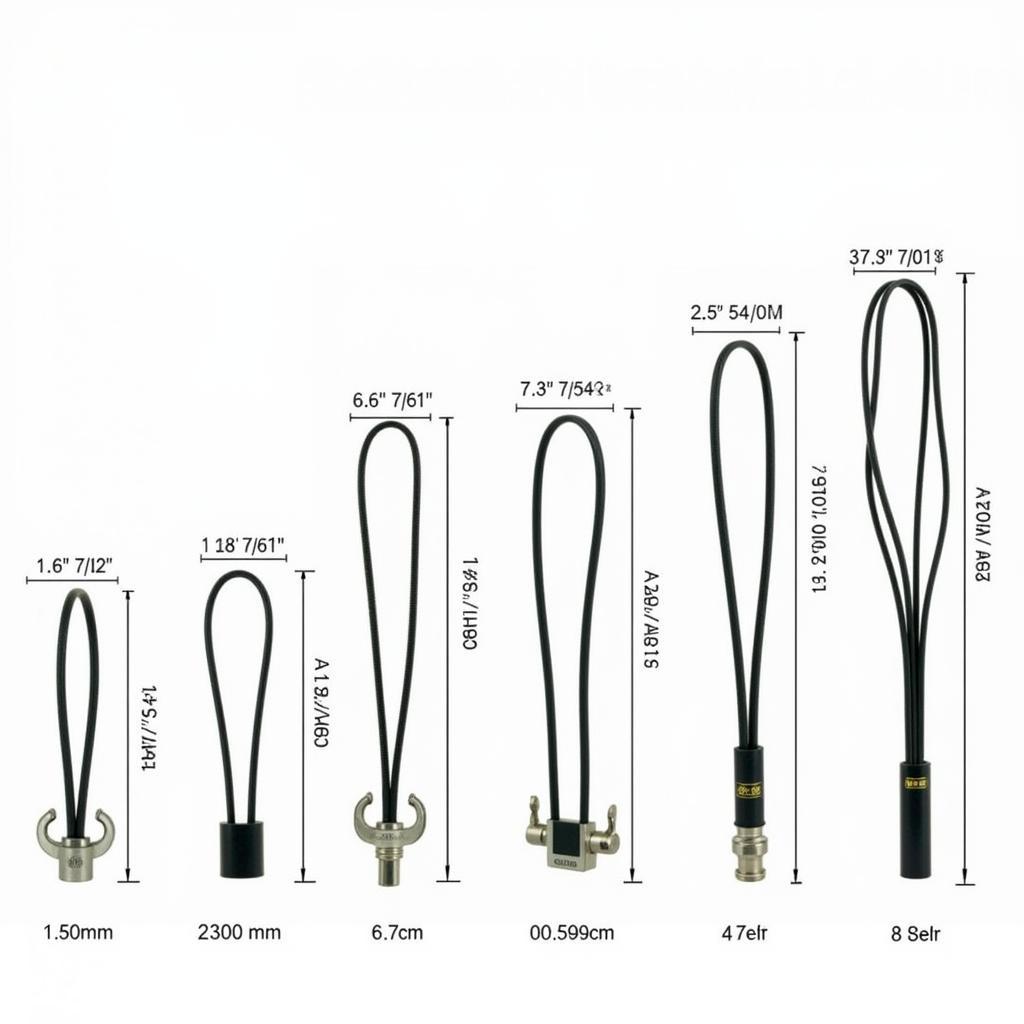Keep Your Cart Rolling: The Ultimate Guide to Club Car Golf Cart Belts
October 10, 2024A well-maintained golf cart is essential for navigating the greens and enjoying your time on the course. And when it comes to keeping your Club Car golf cart running smoothly, a properly functioning belt is crucial. Whether you’re a seasoned golfer or a casual enthusiast, understanding the ins and outs of Club Car Golf Cart Belts can save you time, money, and frustration in the long run.
Why is a Club Car Golf Cart Belt Important?
 Club Car Golf Cart Belt System
Club Car Golf Cart Belt System
The belt in your Club Car golf cart serves as a vital link between the engine and the transmission. Its primary function is to transfer the power generated by the engine to the transmission, which in turn drives the wheels and propels your cart forward. Without a properly functioning belt, your golf cart would simply be stuck in park.
Common Types of Club Car Golf Cart Belts
There are two main types of belts found in Club Car golf carts:
- V-Belts: These belts have a trapezoidal shape and are commonly used in older Club Car models. They are known for their simplicity and affordability but may require more frequent replacements compared to serpentine belts.
- Serpentine Belts: These belts are flat with grooves on one side and are found in newer Club Car models. They are more durable and efficient than V-belts, resulting in a quieter and smoother ride.
Signs You Need to Replace Your Club Car Golf Cart Belt
Knowing when your golf cart belt needs attention can prevent unexpected breakdowns and costly repairs. Here are some telltale signs:
- Squealing noises: A high-pitched squealing sound, particularly when starting the cart or accelerating, often indicates a worn-out belt.
- Slow acceleration: If your cart struggles to gain speed or feels sluggish, it could be a sign of a slipping or worn belt.
- Visible wear and tear: Cracks, fraying, or glazing on the belt’s surface are clear indicators that it’s time for a replacement.
- Burning rubber smell: A strong burning rubber odor emanating from the engine compartment could signify a slipping or overheating belt.
Choosing the Right Club Car Golf Cart Belt
 Club Car Golf Cart Belt Sizes
Club Car Golf Cart Belt Sizes
Selecting the correct belt for your Club Car model is crucial for optimal performance and safety. Factors to consider include:
- Club Car Model and Year: Refer to your owner’s manual or check the manufacturer’s website to determine the specific belt part number compatible with your cart.
- Belt Type: As mentioned earlier, Club Car uses both V-belts and serpentine belts, so make sure you choose the type that matches your cart’s specifications.
- Belt Length and Width: These measurements are crucial for proper fit and performance. Consult your owner’s manual or contact a Club Car dealer for the correct specifications.
How to Replace a Club Car Golf Cart Belt
Replacing a golf cart belt is a task that many mechanically inclined individuals can handle with the right tools and guidance. Here’s a step-by-step guide:
- Gather Your Tools and Materials: You’ll need a new belt, a socket set, a wrench, and a pair of gloves.
- Disconnect the Spark Plug Wire: This is a crucial safety step to prevent accidental starting.
- Locate and Remove the Old Belt: Identify the location of the belt cover and remove it using the appropriate tools.
- Install the New Belt: Carefully route the new belt following the same path as the old one, ensuring it’s properly aligned on all pulleys.
- Reinstall the Belt Cover: Secure the belt cover back in place.
- Reconnect the Spark Plug Wire: Ensure the connection is secure.
Note: If you’re unsure about any step of the process or uncomfortable working on your golf cart, it’s always best to consult a qualified mechanic or Club Car dealer.
Maintaining Your Club Car Golf Cart Belt
Regular maintenance can significantly extend the lifespan of your golf cart belt and prevent unexpected issues. Here are some tips:
- Regular Inspections: Inspect the belt regularly for any signs of wear and tear, such as cracks, fraying, or glazing.
- Check Belt Tension: Ensure the belt has the proper tension. A loose belt can slip and cause damage, while an overly tight belt can strain the engine and bearings.
- Clean the Belt and Pulleys: Regularly clean the belt and pulleys to remove dirt, debris, and other contaminants that can accelerate wear.
- Store Your Cart Properly: When not in use, store your golf cart in a cool, dry place to prevent belt damage from extreme temperatures and moisture.
Conclusion
Taking care of your Club Car golf cart belt is essential for a smooth and enjoyable golfing experience. By understanding the different types of belts, recognizing signs of wear, and following proper maintenance practices, you can keep your cart running in top condition for years to come. Remember, a little preventive maintenance goes a long way in ensuring your golf cart is always ready to hit the green.
FAQ
Q: How often should I replace my Club Car golf cart belt?
A: While there’s no one-size-fits-all answer, it’s generally recommended to replace your golf cart belt every 2-3 years or 1,000 miles, whichever comes first.
Q: Can I use any belt on my Club Car golf cart?
A: No, using the correct belt type and size specified for your Club Car model is crucial.
Q: What happens if my golf cart belt breaks while driving?
A: If your belt breaks while driving, your cart will lose power and come to a stop.
Q: Can I adjust the belt tension myself?
A: While it’s possible to adjust belt tension, it’s recommended to have it done by a qualified mechanic or Club Car dealer to ensure it’s set correctly.
Q: How can I prevent premature belt wear?
A: Regular inspections, proper belt tension, and keeping the belt and pulleys clean can help prevent premature wear.
Need assistance with your Club Car golf cart belt? Our dedicated team is here to help! Contact us at Phone Number: 0963418788, Email: [email protected] or visit us at 2M4H+PMH, Phường Nghĩa Thành, Gia Nghĩa, Đắk Nông, Việt Nam. We offer 24/7 customer support.